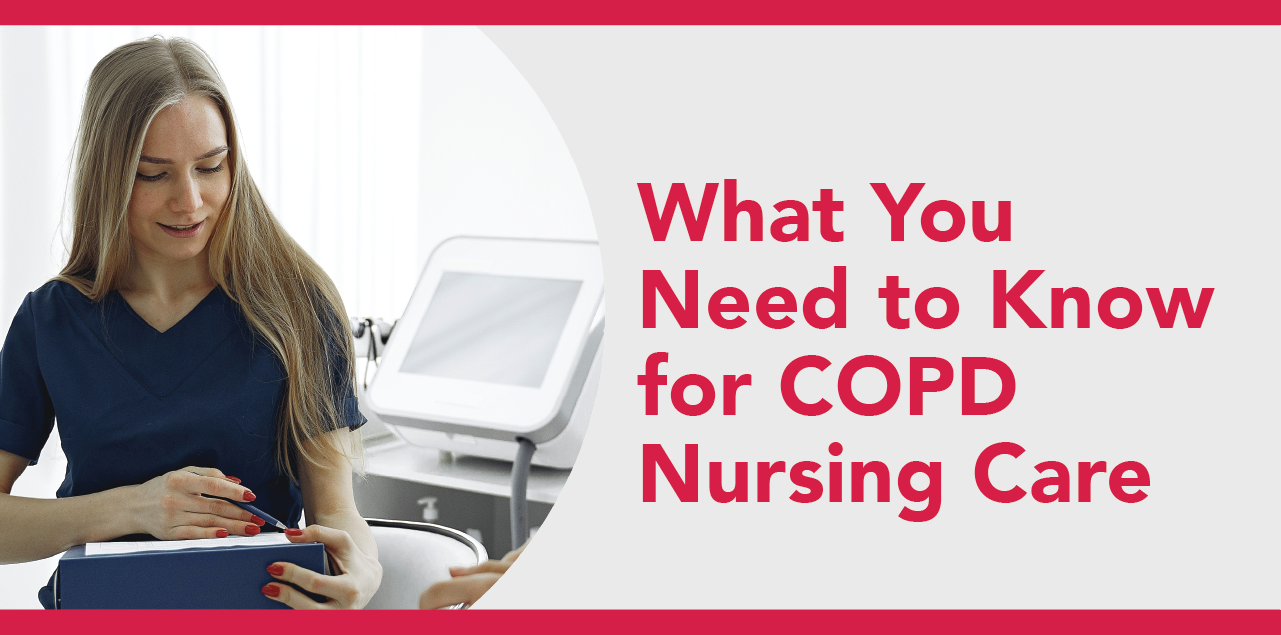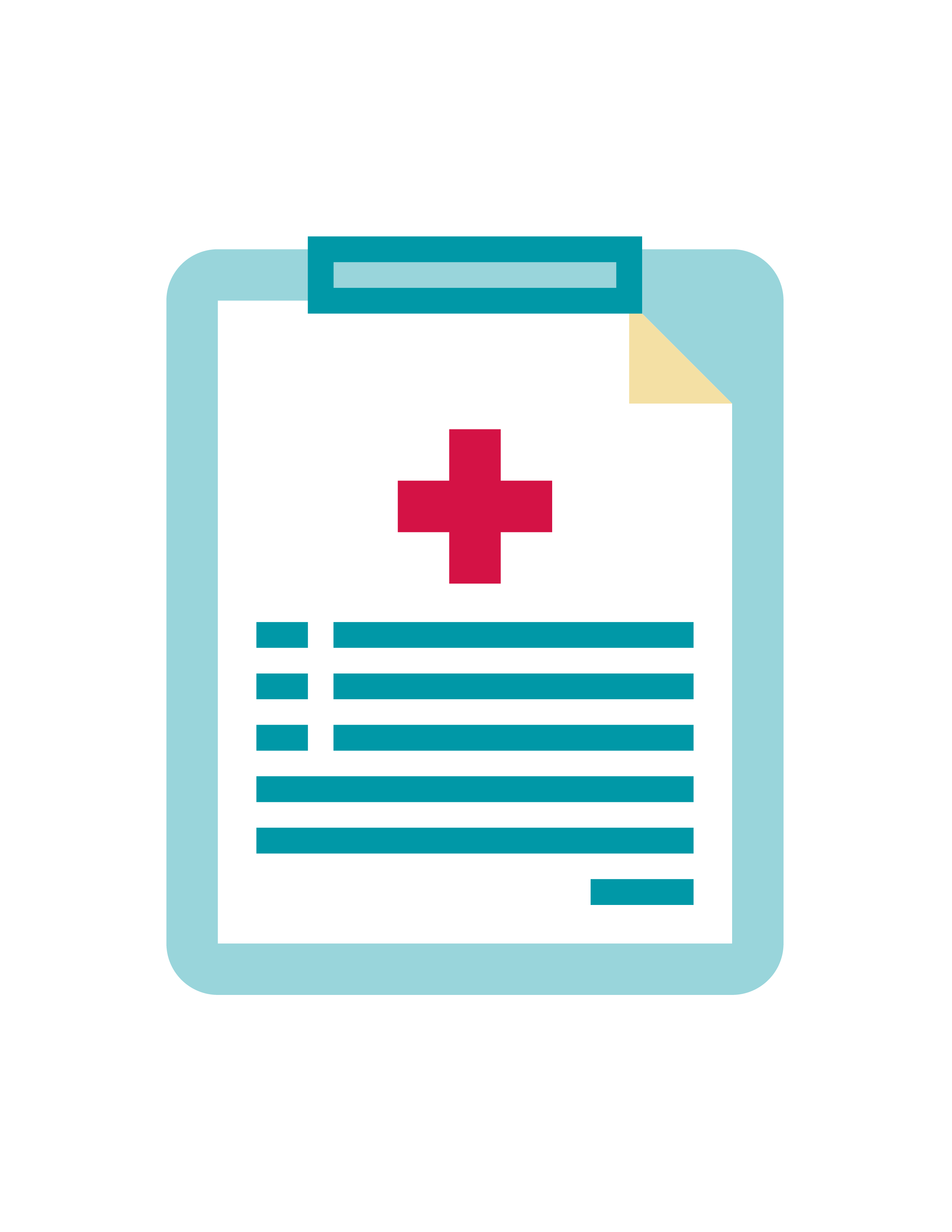
COPD (chronic obstructive pulmonary disease) affects millions of Americans each year.[1] And because there are different types of COPD that can cause individuals to experience symptoms in many ways, understanding which conditions are associated with your patients’ pulmonary disease can help to provide improved COPD nursing care.
What We Know About COPD
COPD can be split into three separate conditions: emphysema, chronic bronchitis, and refractory asthma.[2] Each one of these pulmonary diseases can cause lung inflammation that restricts the airways, making it difficult for patients to breathe on their own. In addition, there are various stages of COPD severity[3] that can worsen over time and affect your patients’ treatment.
Clinicians may diagnose COPD in one of three ways:

- Lung Function Tests
- Chest X-ray
- Computerized Tomography (CT) Scan[4]
A fourth option may include a blood test to help measure the regularity of a patient’s oxygen and carbon dioxide levels.[5]
Traditionally, COPD treatment may consist of a combination of certain medications (e.g. bronchodilators) used to help relax the muscles around the airways to prevent obstruction, in addition to oxygen therapy, lifestyle changes,[6] and sometimes surgery.[7] Treatment will depend on the severity of the COPD symptoms and will be different for each patient.
COPD and Comorbidity
In addition to the three types of COPD, certain pulmonary conditions can coexist with COPD as well, including bronchiectasis. This type of chronic lung condition causes inflammation, infection, and irreversible damage to a patient’s airways as the bronchi becomes abnormally widened and unable to mobilize and clear mucus buildup. Unfortunately, it is difficult to test for bronchiectasis using a COPD lung test. The most effective approach to diagnosing bronchiectasis is through a high-resolution computerized tomography (HRCT) scan. This device allows clinicians to examine the lung’s structure using a three-dimensional (3D) model.[8]
As part of your COPD nursing management program, it’s important to understand that COPD and bronchiectasis share common symptoms, including:
- Shortness of breath
- Difficulty breathing
- Fatigue
- Wheezing
- Frequent pneumonias
- Chronic inflammation
- Irreversible lung damage
With this in mind, you may decide to request that your patient receives testing for bronchiectasis if he or she displays the following pattern of symptoms:
- Experiences recurring lung infections requiring hospitalization
- Produces sputum that appears green or yellow in color
- Requires multiple courses of antibiotics to help treat an infection
 COPD Nursing Management
COPD Nursing Management
An essential component of COPD nursing care is identifying the symptoms, understanding its causes, and advocating the best treatment program on behalf of your patients.
At Electromed, we offer a simple solution to help clinicians and hospital care teams reduce COPD hospital readmissions and improve patient care through effective high frequency chest wall oscillation (HFCWO) therapy.
Patients living with an overlap of COPD and bronchiectasis require a different approach to treatment to help prevent recurring infections and to help stabilize lung function. The SmartVest Airway Clearance System is the only respiratory vest on the market with proven studies that demonstrate its effectiveness in significantly reducing bronchiectasis-related exacerbations that require hospitalization and ongoing antibiotic usage.[9]
By incorporating SmartVest into your continuum of care program, your hospital benefits from a solution designed to reduce pulmonary readmissions and a support team committed to helping you throughout the patient care journey from hospital to home. To learn more about how we can help you and your team improve COPD patient outcomes, contact us today!
Become an Advocate for Your COPD Patients
 Improve your COPD nursing care program with SmartVest! Learn more about the easy SmartVest Prescription and documentation process. We do offer e-prescribe options to help streamline the documentation process. This will allow clinicians to submit prescriptions securely and quickly to Electromed. For questions or to help get your hospital set up with SmartVest, connect with our team today!
Improve your COPD nursing care program with SmartVest! Learn more about the easy SmartVest Prescription and documentation process. We do offer e-prescribe options to help streamline the documentation process. This will allow clinicians to submit prescriptions securely and quickly to Electromed. For questions or to help get your hospital set up with SmartVest, connect with our team today!
[1] American Lung Association. “Learn About COPD.” Retrieved from https://www.lung.org/lung-health-diseases/lung-disease-lookup/copd/learn-about-copd#:~:text=COPD%20is%20the%20third%20leading,term%20disability%20and%20early%20death.
[2] Medical News Today. “COPD: What Is It?” Retrieved from https://www.medicalnewstoday.com/articles/327482
[3] The Lung Institute. “Stages of COPD: Mild through End-Stage COPD.” Retrieved from https://lunginstitute.com/blog/stages-of-copd-mild-through-end-stage/
[4] The Mayo Clinic. “COPD: Diagnosis and Treatment.” Retrieved from https://www.mayoclinic.org/diseases-conditions/copd/diagnosis-treatment/drc-20353685
[5] COPD News Today. “4 Types of Tests Required to Test COPD.” Retrieved from https://copdnewstoday.com/2017/03/09/four-types-of-tests-required-to-diagnose-copd/
[6] Medical News Today. “Medical News Today. “COPD: What Is It?” Retrieved from https://www.medicalnewstoday.com/articles/327482
[7] American Thoracic Society. “Surgery for Chronic Obstructive Pulmonary Disease.” Retrieved from https://www.thoracic.org/patients/patient-resources/resources/surgery-for-COPD.pdf
[8] Bronchiectasis News Today. “Bronchiectasis Diagnosis.” Retrieved from https://bronchiectasisnewstoday.com/bronchiectasis-diagnosis/
[9] Powner, Jordan, et al. Employment of an Algorithm of Care Including Chest Physiotherapy Results in Reduced Hospitalizations and Stability of Lung Function in Bronchiectasis. BMC Pulmonary Medicine, BioMed Central. 25 Apr. 2019.
